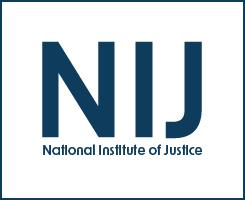Mexican Americans
Effects of Legal Supervision on Narcotics Use and Criminal Behavior Over the Addiction Career
Ethnic and Gender Differences in Legal Supervision Effectiveness in Controlling Narcotics Use and Crime
Effect of Legal Supervision on Narcotic Addiction and Criminal Behavior
Reexamining the Effects of Probation and Parole on Narcotics Addiction and Property Crime
Gratitude for Bystander Action Varies by Peer Intervention and Social Norms
How Do Victimized Youth Emotionally and Socially Appraise Common Ways Third-Party Peers Intervene?
Inclusive Research: Engaging People Closest to the Issue Makes for Better Science & Greater Impact; 2023 NIJ Research Conference Plenary
This panel will discuss what inclusive research is, how to conduct it, and what issues and challenges exist about engaging in it. “Inclusive research” has its history as a participatory research method designed to ensure people closest to the issue or problem under study are authentically engaged in the research process rather than simply being “research subjects.” While community-based participatory research has begun to take on greater prominence in the criminal justice realm, such efforts are largely confined to qualitative research inquiries.
See the YouTube Terms of Service and Google Privacy Policy
Ethnically Diverse Adolescents Recount Third-Party Actions That Amplify Their Anger and Calm Their Emotions After Perceived Victimization
"I Felt Like a Hero:" Adolescents' Understanding of Resolution-Promoting and Vengeful Actions on Behalf of Their Peers
Analyses of a set of 128 ancestry informative SNPs (AISNPs) in a global set of 119 population samples
Peers Influence Response to Threat: Cultural Norms, Reciprocity & Identity Processes in the Adolescent Caregiving System
Third-Party Intervention in Peer Victimization: Self-Evaluative Emotions and Appraisals of a Diverse Adolescent Sample
School Transitions and Student Responses to Victimization - Breakout Session, NIJ Virtual Conference on School Safety
On February 16-18, 2021, the National Institute of Justice hosted the Virtual Conference on School Safety: Bridging Research to Practice to Safeguard Our Schools. This video includes the following presentations:
See the YouTube Terms of Service and Google Privacy Policy
Ethnic Identity and Offending Trajectories Among Mexican American Juvenile Offenders: Gang Membership and Psychosocial Maturity
Trajectories of Acculturation and Enculturation in Relation to Heavy Episodic Drinking and Marijuana Use in a Sample of Mexican American Serious Juvenile Offenders
Hispanic and Anglo Gang Membership in Two Southwestern Cities
Longitudinal Association Between Alcohol Use And Intimate Partner Violence Among Ethnically Diverse Community Women
Project on Human Development in Chicago Neighborhoods - Interview at the National Institute of Justice
Interview with Akiva Liberman, The Urban Institute
Chicago Ceasefire - Postplenary Session at the 2009 NIJ Conference
CeaseFire is an evidence-based, data-driven intervention designed to stop shootings and killings in high-incidence neighborhoods by directly intervening with those who are most likely to be involved in a shooting and by building support for alternatives to violence in those neighborhoods. Panel members will share their experiences “on the ground” mediating conflicts and working one-on-one with high-risk individuals.



